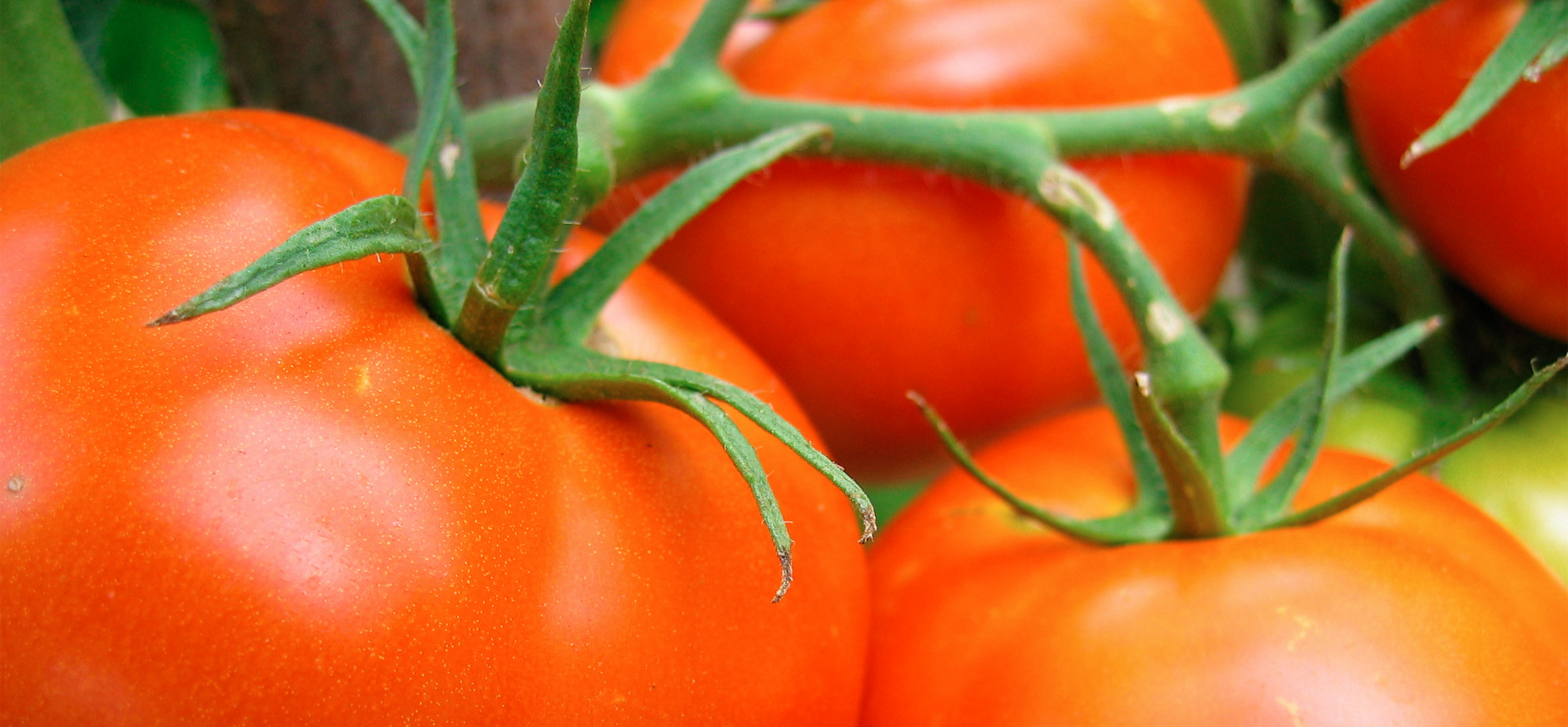What Tomato Variety Do You Have?
Determinate or Bush varieties are those that reach a certain plant height and then stop growing, with most fruit borne over a four-week period. Celebrity, Keepsake, Mountain Gold, Viva Italia/Roma, Sunstart are varieties.
Indeterminate varieties continue to grow and flower throughout the season but have less mature fruits at any one time. Jetstar, Yellow Pear, Big Boy, Better Boy, Carolina Gold, Sweet 100 Cherry, Beefmaster, Brandywine, Hillbilly, Supersonic are varieties.
Transplanting Tomatoes
Choose an overcast, wind-free day if possible. Tomato plants thrive in any reasonably good garden soil that is well-drained and gets full sun. Water plants thoroughly about ½ hour before planting using a solution of water-soluble fertilizer. Make sure holes are large enough to accommodate all the roots without crowding. Set transplants deep, the first true leaves just above soil level. Plant leggy plants with the root ball horizontally; roots will form along the buried stem and make better subsequent growth. Partially refill hole with soil, water in and finish filling with soil and firm soil around stem.
To Stake or not to Stake
Wooden stakes or wire cages 40 to 72” tall work well as supports for tomato plants, the shorter for determinate varieties and the taller for the indeterminates. In large plantings, rows of staked tomatoes should be 30 to 42” apart and plants spaced 24 to 30” apart. If tomatoes are not staked, row spacing should be 6 ft. and plants spaced at 4 ft. apart to allow proper air movement and plant development. Unstaked plants should be protected with plastic or organic mulch. Staking is preferred where space is limited as the tomatoes will yield a much higher proportion of clean, undamaged fruit. Tie plants with any soft stretchable material at regular intervals throughout the summer. Do not tie too tightly; the stems will grow and thicken as the plants mature.
Caring for Tomato Plants
• Keep plants evenly well-watered, particularly during periods of drought, to ensure better yields and control such problems as blossom end rot.
• Fertilize with low nitrogen fertilizer when the plants begin to set fruit. Then feed once a month as the fruits are developing. Stop when they reach their mature size. Excessive nitrogen produces an abundance of foliage rather than fruit.
• Weed control is extremely important since weeds compete for water, food, and space. Mulching with straw or grass clippings will prevent weeds, help conserve moisture, help protect fruits from rot and blight and help maintain even soil temperatures.

